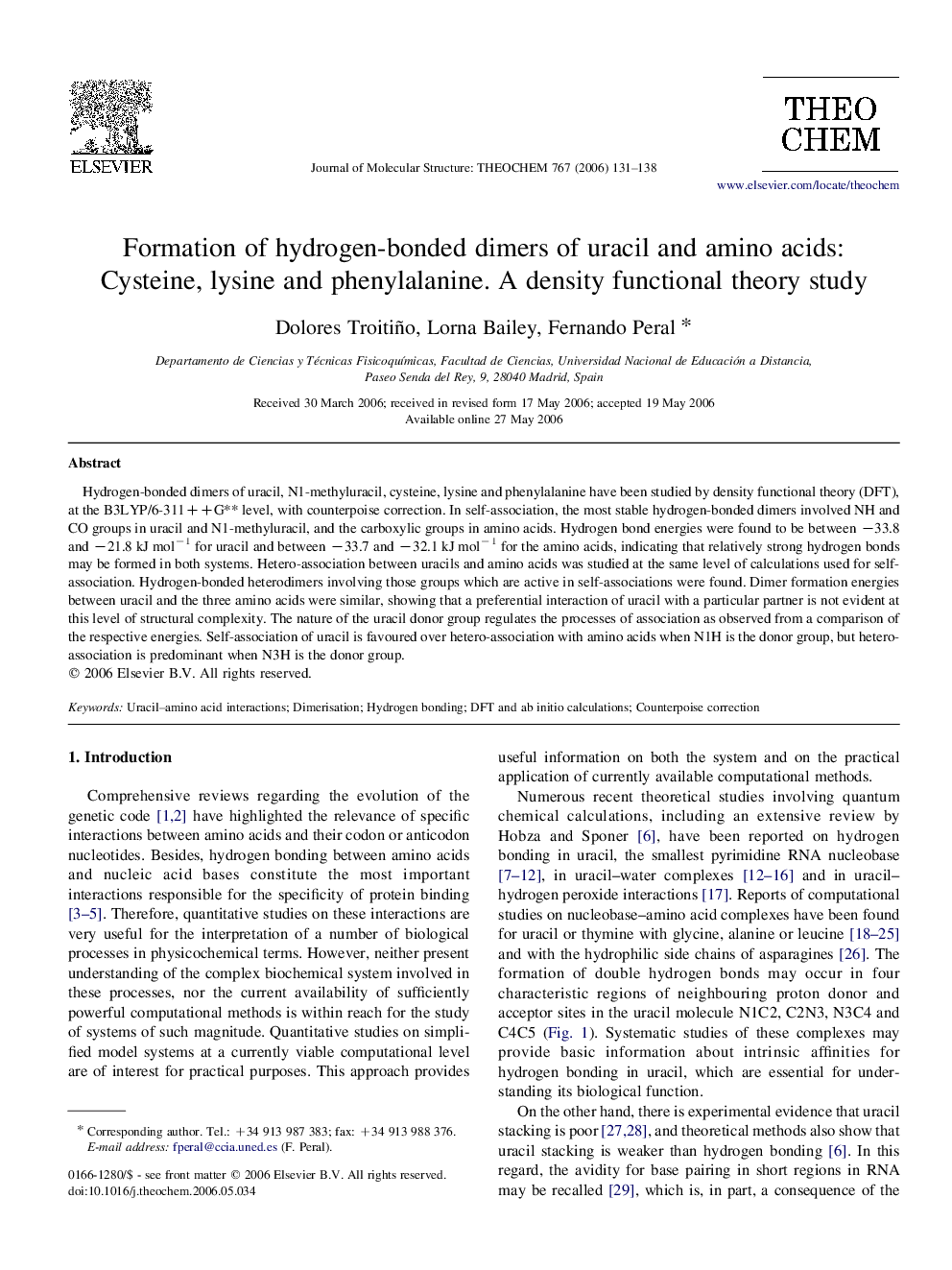| Article ID | Journal | Published Year | Pages | File Type |
|---|---|---|---|---|
| 5418433 | Journal of Molecular Structure: THEOCHEM | 2006 | 8 Pages |
Abstract
Hydrogen-bonded dimers of uracil, N1-methyluracil, cysteine, lysine and phenylalanine have been studied by density functional theory (DFT), at the B3LYP/6-311++G** level, with counterpoise correction. In self-association, the most stable hydrogen-bonded dimers involved NH and CO groups in uracil and N1-methyluracil, and the carboxylic groups in amino acids. Hydrogen bond energies were found to be between â33.8 and â21.8Â kJÂ molâ1 for uracil and between â33.7 and â32.1Â kJÂ molâ1 for the amino acids, indicating that relatively strong hydrogen bonds may be formed in both systems. Hetero-association between uracils and amino acids was studied at the same level of calculations used for self-association. Hydrogen-bonded heterodimers involving those groups which are active in self-associations were found. Dimer formation energies between uracil and the three amino acids were similar, showing that a preferential interaction of uracil with a particular partner is not evident at this level of structural complexity. The nature of the uracil donor group regulates the processes of association as observed from a comparison of the respective energies. Self-association of uracil is favoured over hetero-association with amino acids when N1H is the donor group, but hetero-association is predominant when N3H is the donor group.
Related Topics
Physical Sciences and Engineering
Chemistry
Physical and Theoretical Chemistry
Authors
Dolores Troitiño, Lorna Bailey, Fernando Peral,
